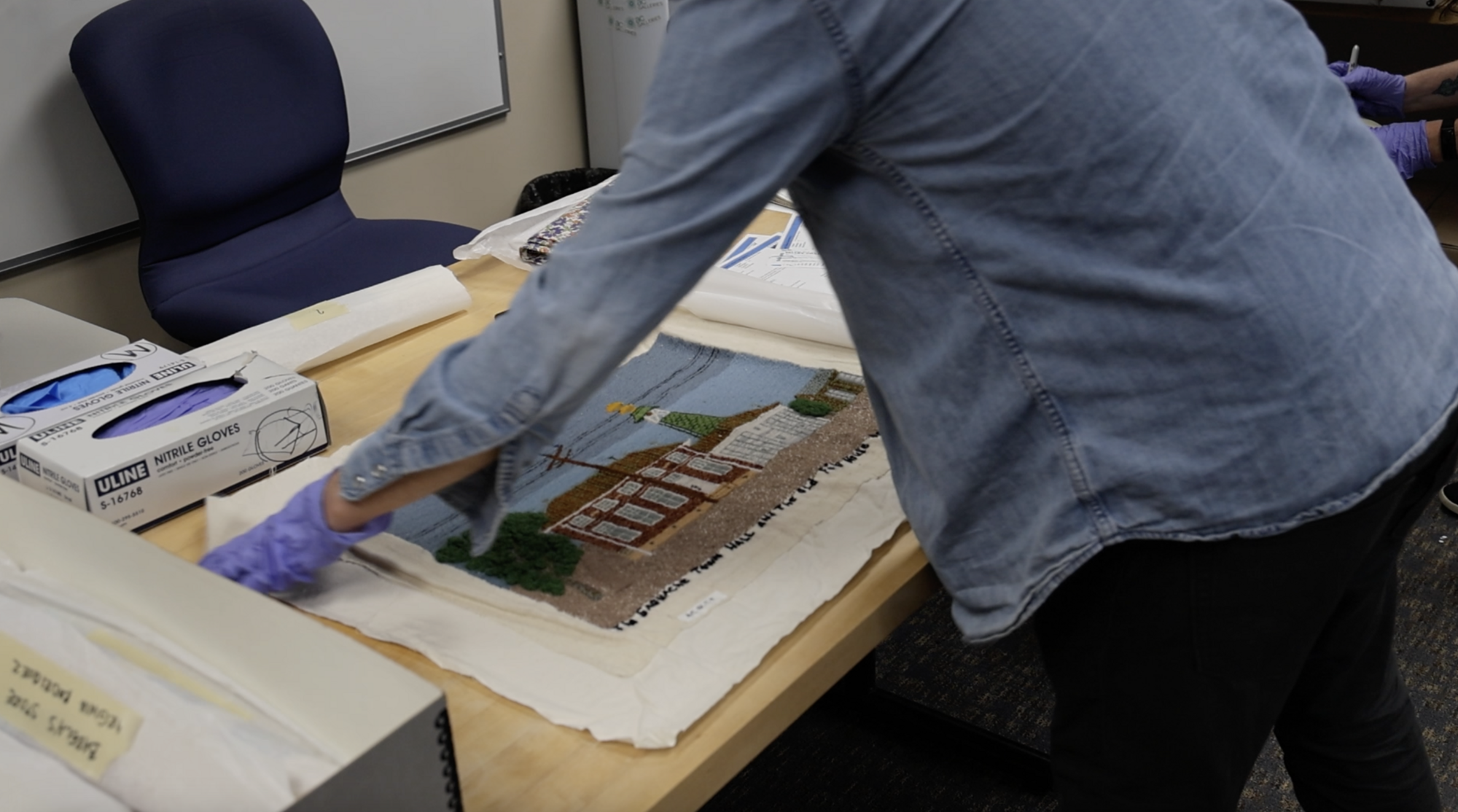Lost art returns to the Arvada Center

SAN LUIS VALLEY — An exhibit opening Thursday at the Arvada Center focuses a traditional fiber art form brought to New Mexico and Southern Colorado by Spanish colonists — and still practiced today.
“Colcha Embroidery of the San Luis Valley” includes the work of 34 multi-generational artists from Colorado’s south-central counties and is on display through November 12.
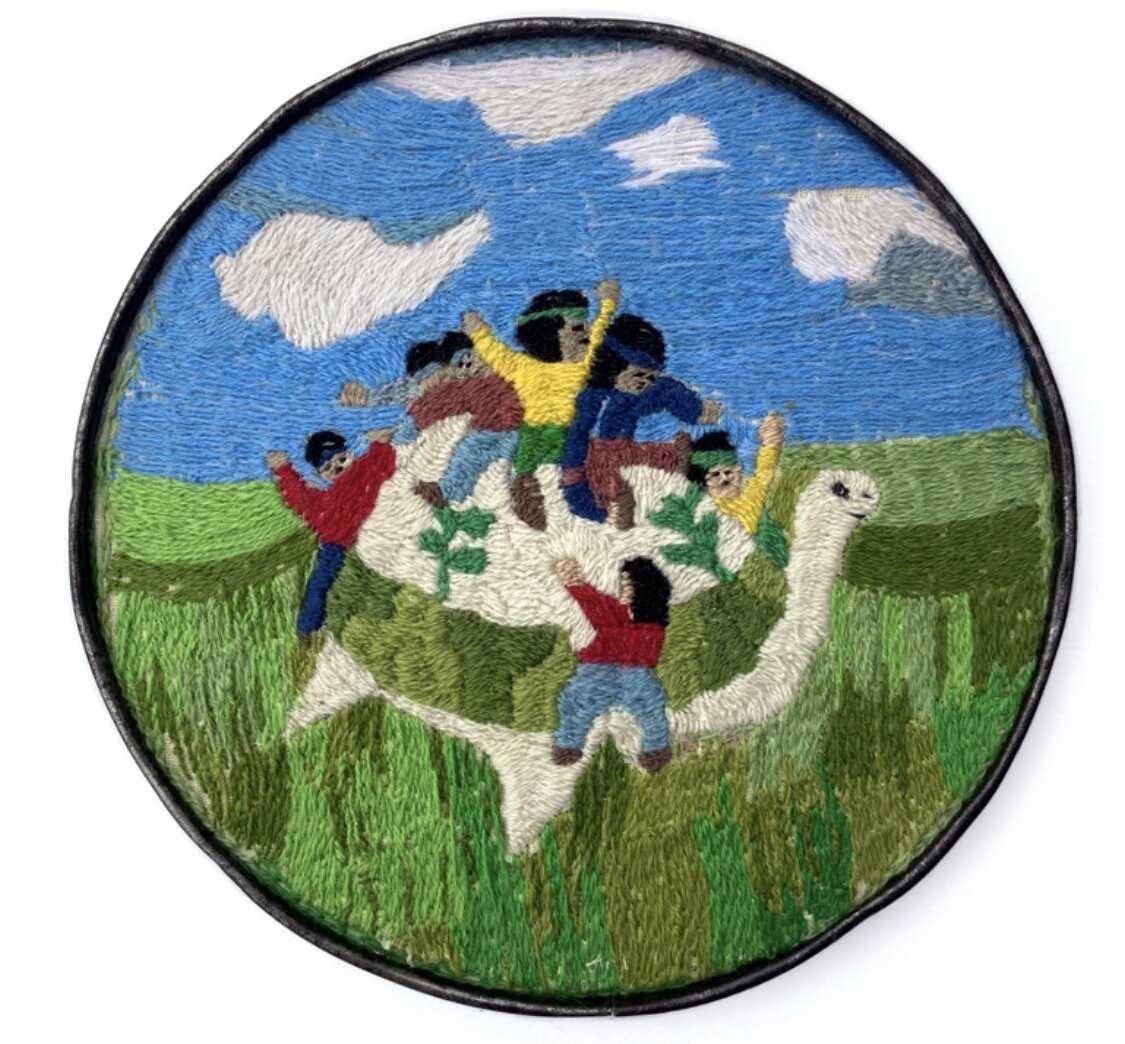
Photo courtesy of the artist and Patsy Garcia, The Turtle Storyteller, 2023. Wool on cotton. Image courtesy of The Range.
Nine of the 47 colcha embroidery pieces were unearthed from storage this year within the Arvada Center’s collection.
They were previously thought to be missing after a 1982 fiber arts exhibition at the Arvada Center, “Artists of the San Luis Valley.” The 1982 exhibit featured colcha embroidery work from many of the region’s prominent working colcha embroidery artists and was organized in part by the Virginia Neal Blue Resource Center for Colorado Women, a Denver foundation that centered rural economic opportunity by attempting to create and bolster local cottage industries.
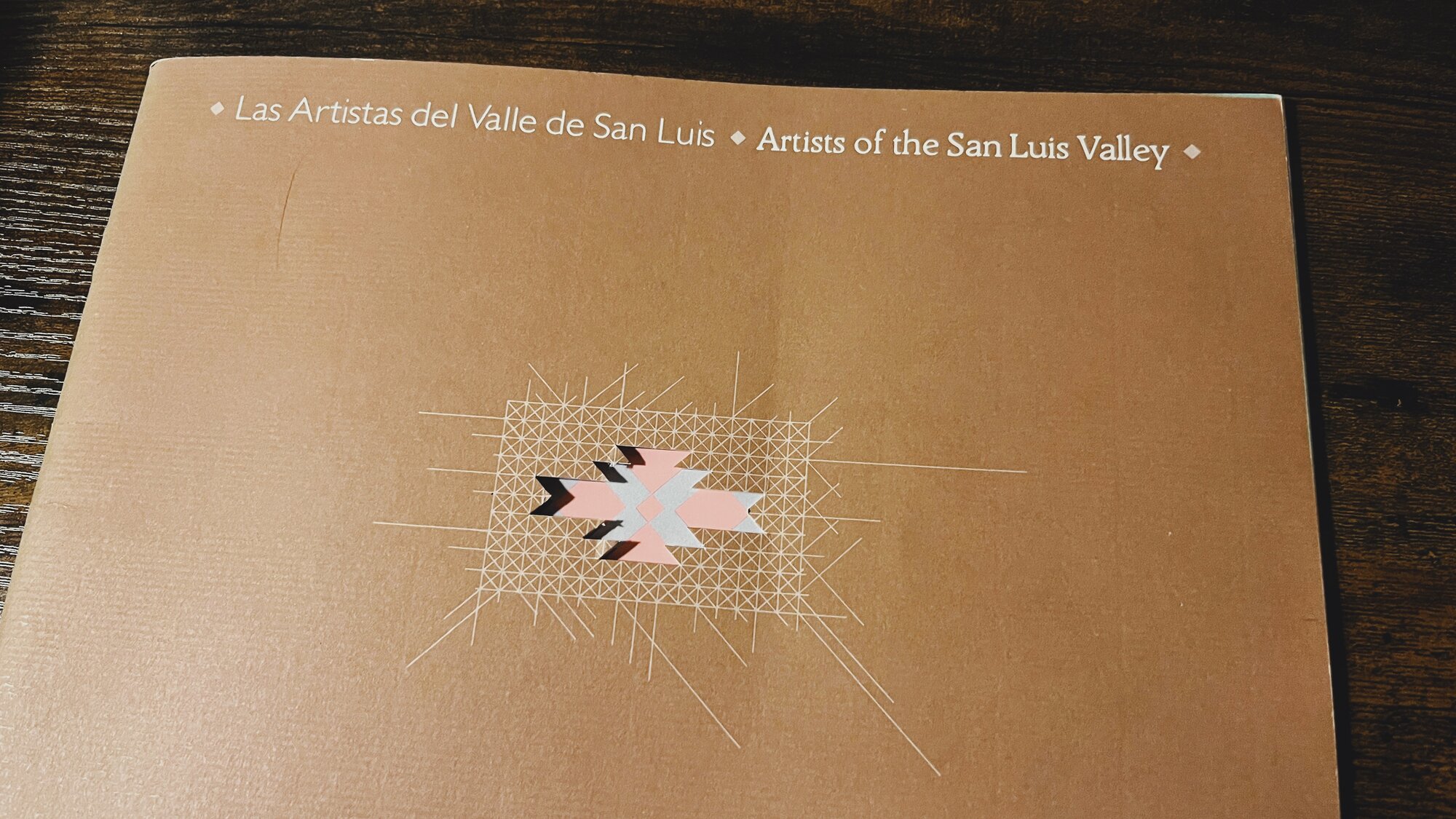
The exhibit book from the 1982 program at the Arvada Center.
Artists and their families say they were not invited to the 1982 show, and in fact didn’t even know it had taken place. In 1983, at least nine of the colcha embroidery works from the show were purchased by the Arvada Center from the Virginia Neal Blue group. Just this spring, Exhibition Manager and Associate Curator Emily Grace King happened to find a box containing the wrapped works.
Arvada Center Galleries and Exhibitions staff and reveal nine relocated artworks from the original colcha embroidery exhibition in 1982 to Lucha Martinez de Luna and colcha embroidery artist Trent Segura, who is part of the 2023 exhibition. Segura is the great-nephew of famed colcha embroidery artist, the late Tavi Trujillo, whose work appears in Colcha Embroidery.
Now on display, the nine pieces from the 1982 exhibition will be deaccessioned by the City of Arvada and returned to the artists and surviving family members, Arvada Center Director of Galleries and Curator Collin Parson and President and CEO Philip C. Sneed said in a meeting with artist representatives in July.
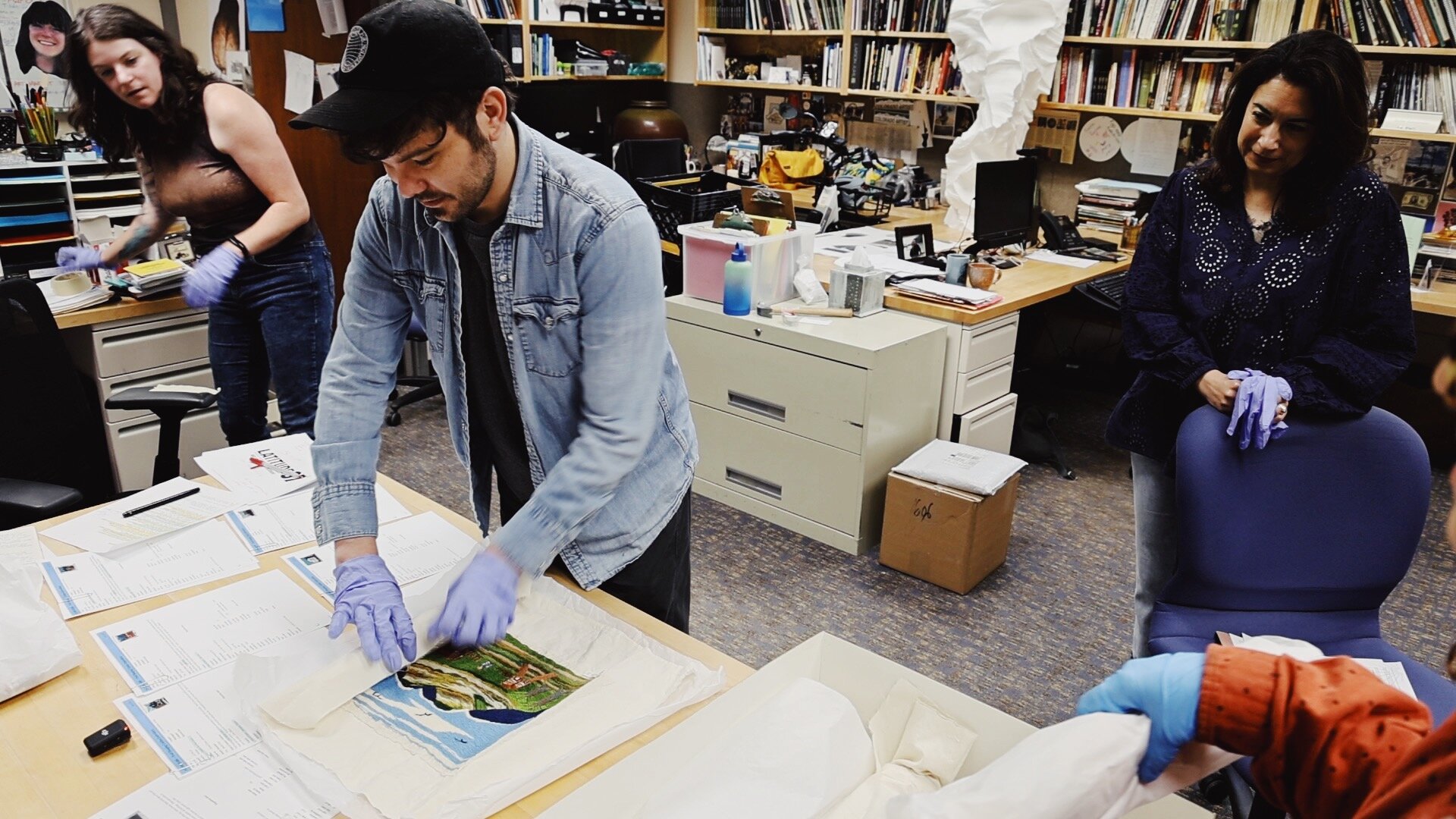
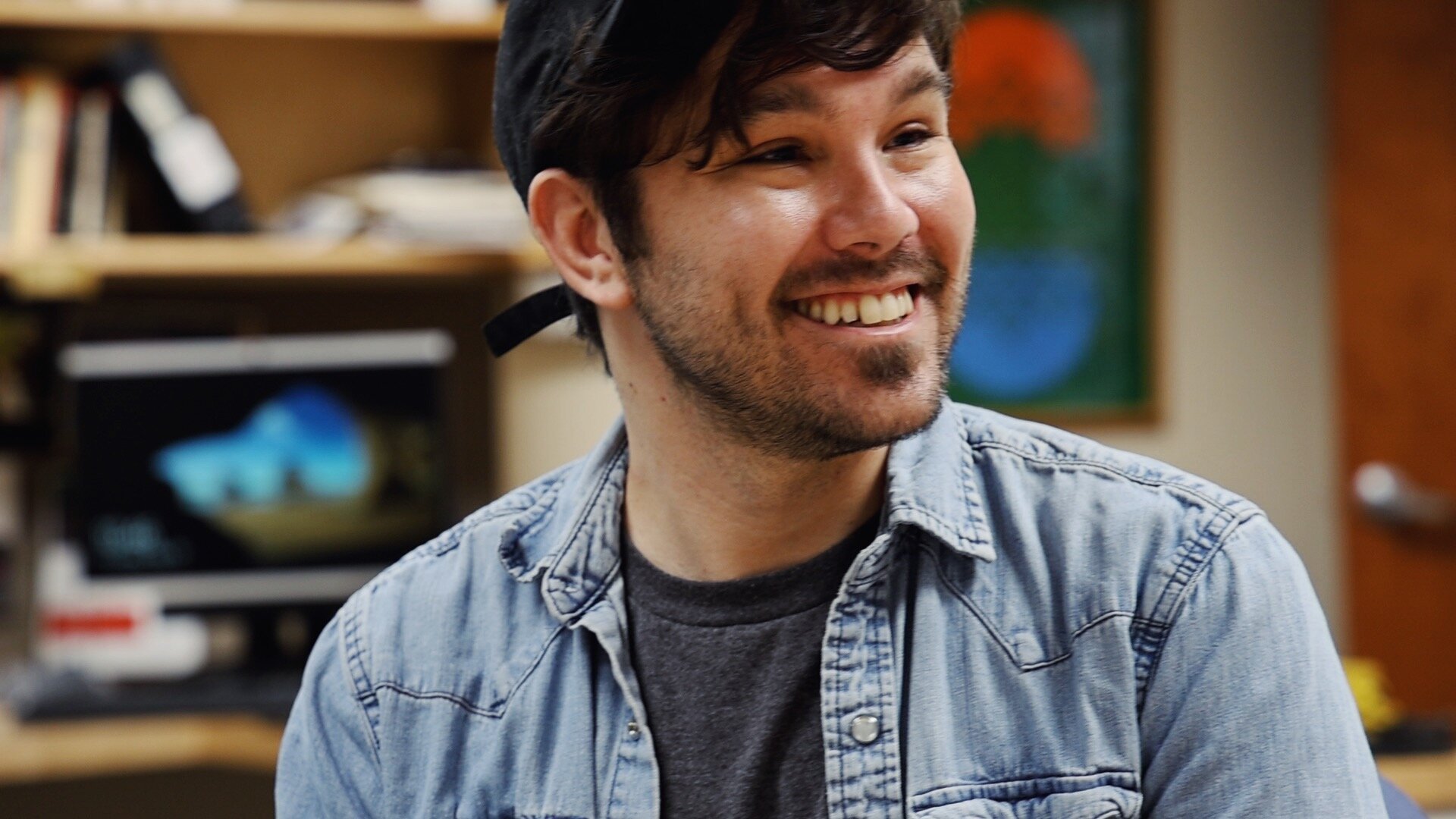
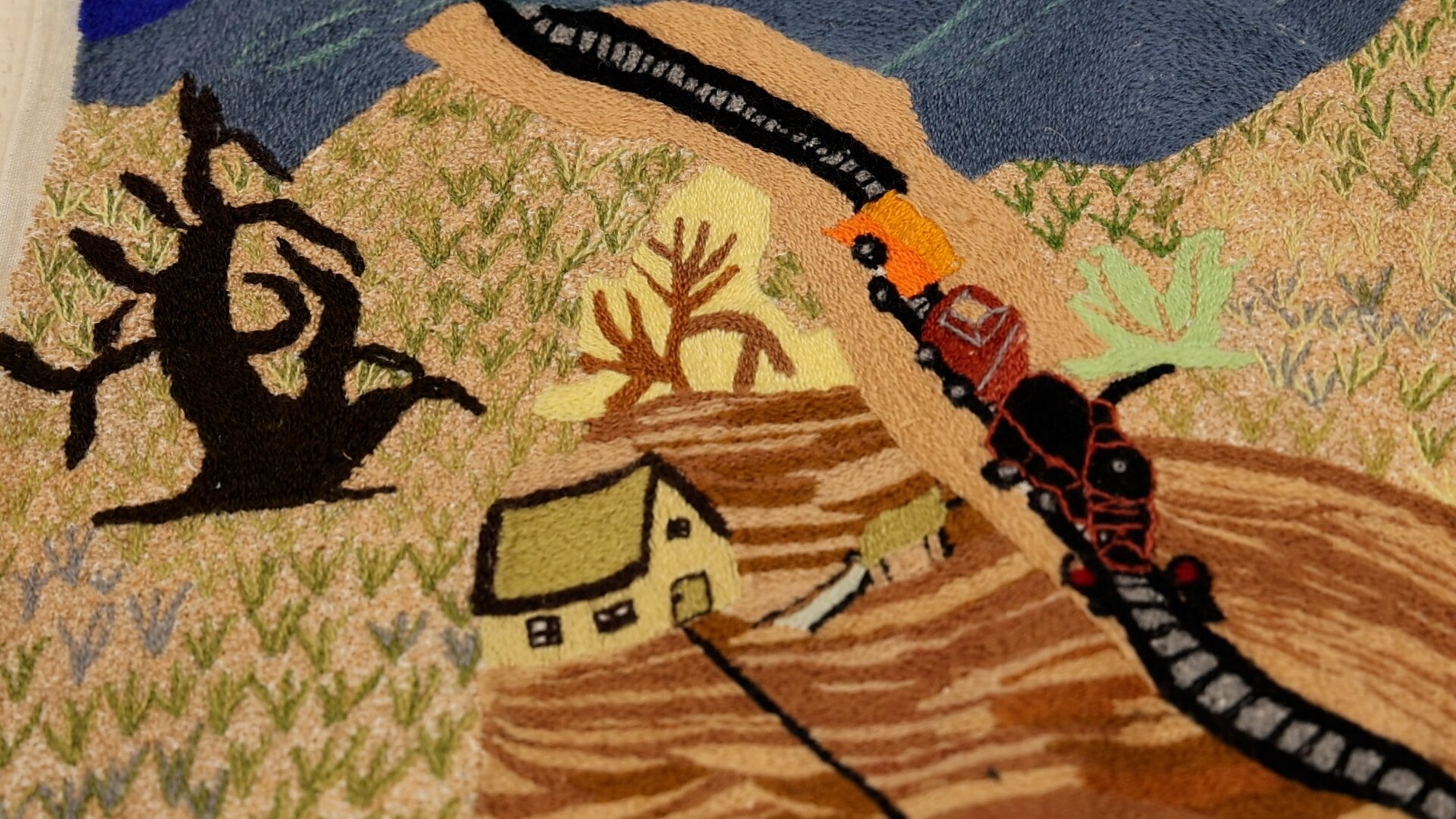
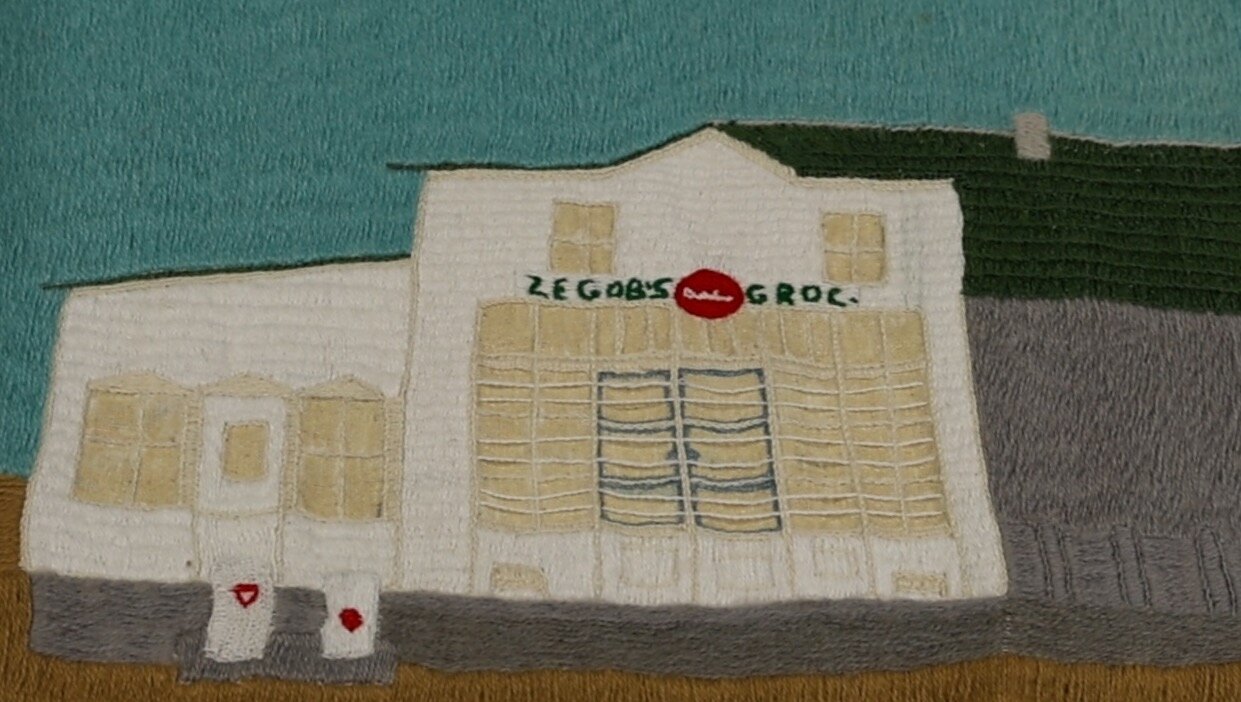
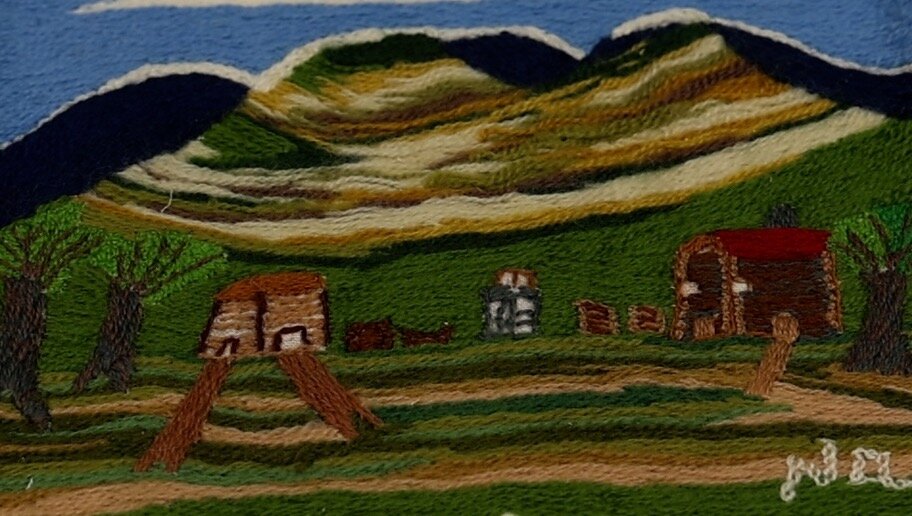
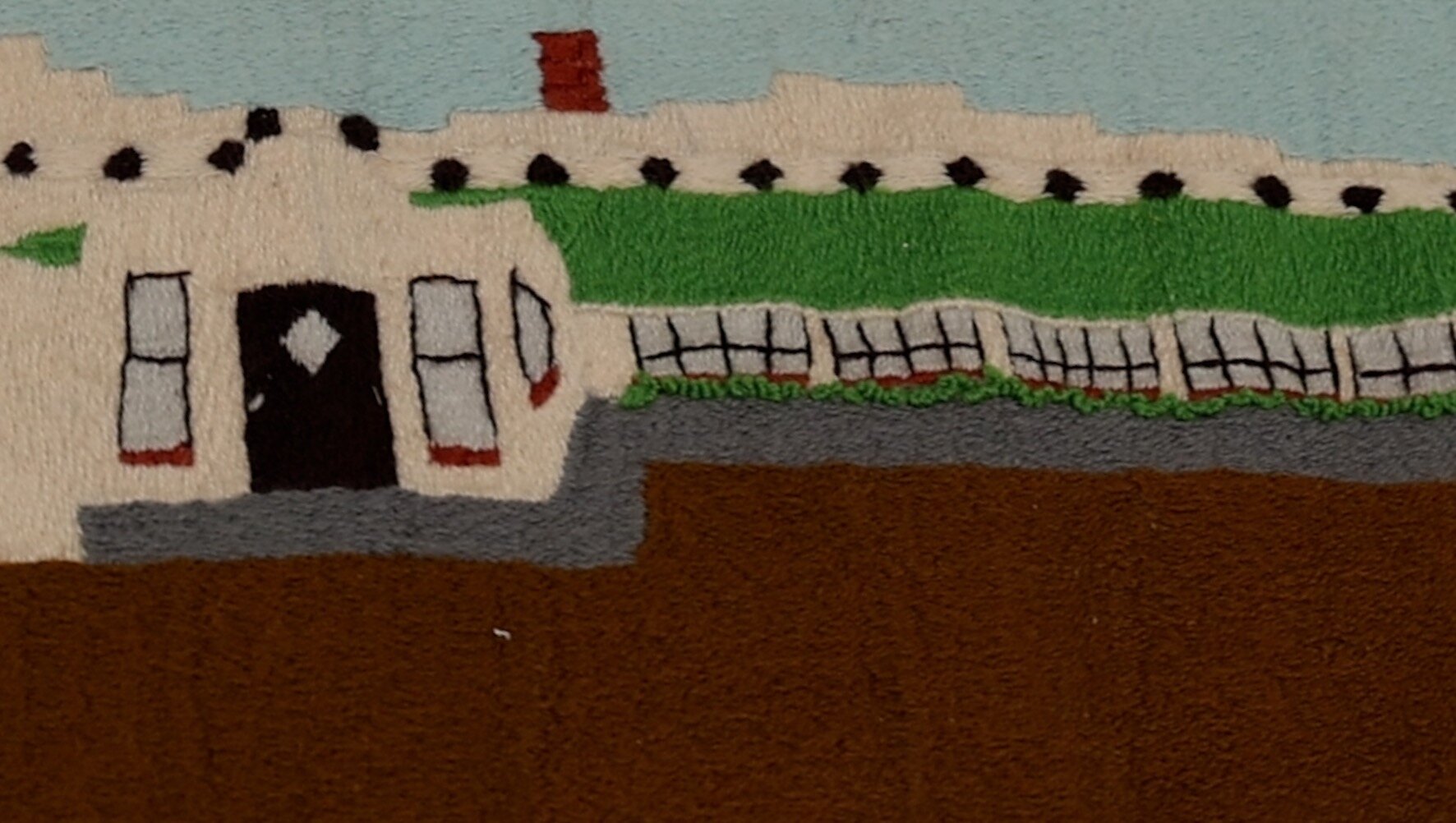


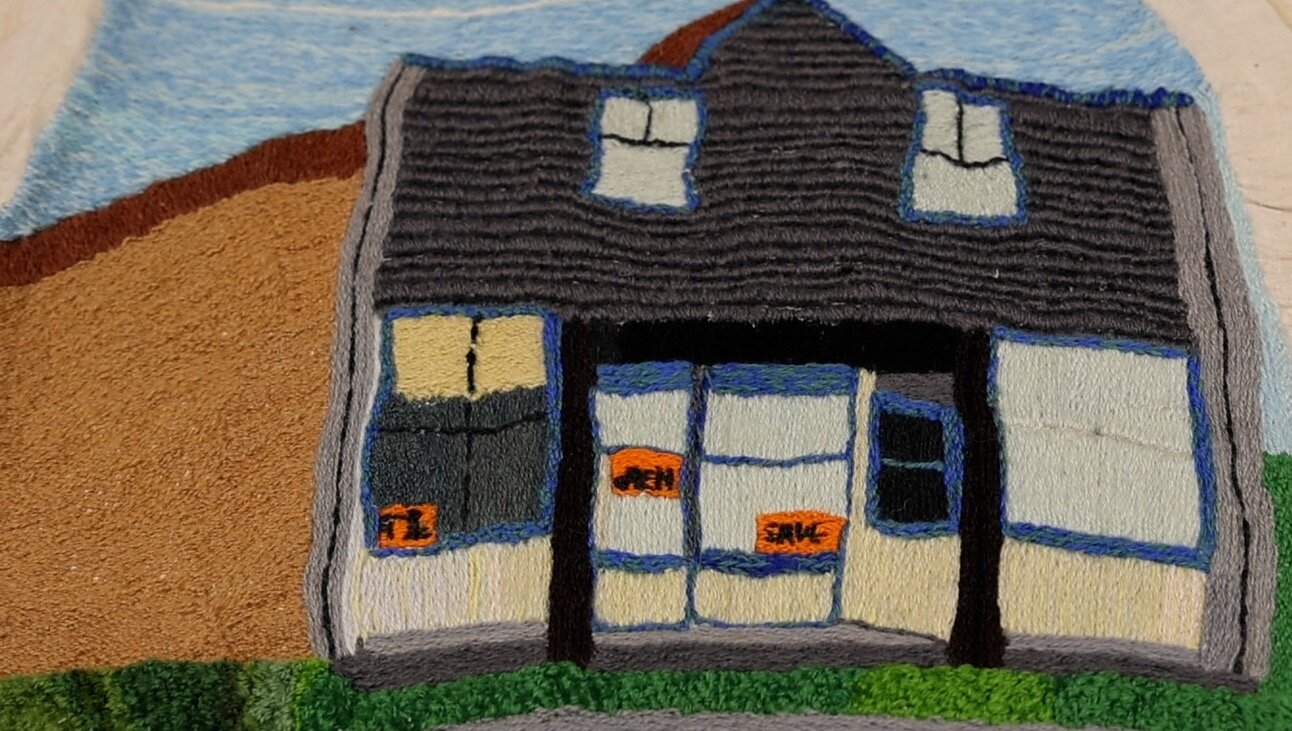

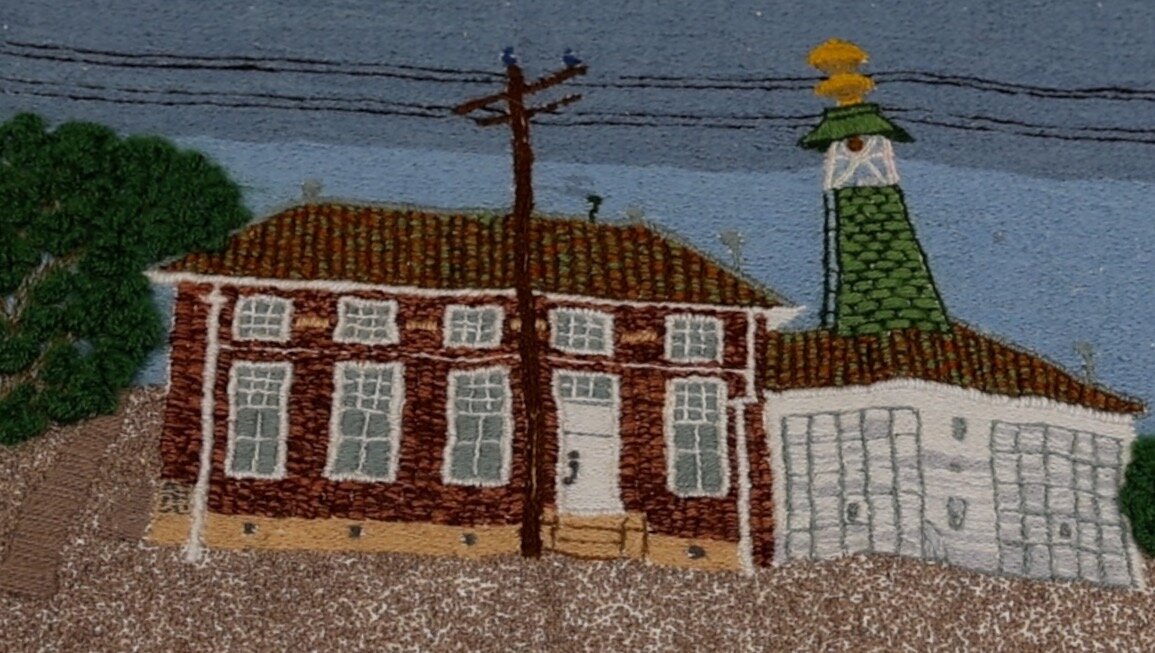
Top Row, L-R: Judy Vigil (The Train), Sostena Sandoval Clevens (Zegob’s Store), Nettie Quintana (Old Homestead). Middle Row, L-R: Judy Vigil (Sangre de Cristo Health Center), Marcella Quintana (Country Church), Judy Vigil (My Cabin). Bottom Row, L-R: Virginia Rodriguez (Barela’s Store), Marcella Quintana (Old Friends Home), Margie Gurule (The Saguache Town Hall and the Old Fire House Built July 1915).
The Arvada Center has sales receipts totaling $280 for the nine works ranging from $15 to $90. It is unknown if the artists were paid. The Virginia Neal Blue group, responsible for selling the works, often did not return unsold art, compensate artists or or provide records for institutions or collectors that purchased artworks, artists and their families say. Decades later, colcha embroidery artists and their descendants still wonder what happened to the other missing works and if they, too, could be found and returned alongside the Arvada Center’s collection.

Segura tours Arvada Center storage with Exhibition Manager and Associate Curator Emily Grace King.
Exhibit co-curator and Saguache colcha embroidery artist Adrienne Garbini has been instrumental in locating and recovering the lost works, and in communicating with families to connect the dots to return them.
The colcha embroidery artists in the 1980s exhibit “were not centered in the work, because they weren’t included. They weren’t invited,” Garbini said. “We’re hoping to open a new chapter with colcha embroidery artists and the Arvada Center.”
Garbini is still searching for other works created under the Virginia Neal Blue Foundation in association with its one-time director Blanche Cowperthwaite and project associate and photographer Kathryn Nelson of Denver. Garbini said other works may exist elsewhere in museums or personal collections within Colorado — or beyond. She is currently compiling a website of the missing pieces.
The loss or theft of artwork created mistrust and trauma in the community, Garbini acknowledged.
“It deflated some people to such a degree that they stopped entirely working in colcha embroidery, and there was a lot of hurt. There became the sense that they no longer wanted to participate in these types of outside programs,” she said. “The biggest issue was that it left a wake of trauma in Saguache.”
Still, many of these women and their descendants carry on the tradition, creating art work and practicing colcha embroidery in their communities today.
[Related: The culture of colcha embroidery, alive in Taos]
Carrying on tradition
“Colcha embroidery is a textile tradition of New Mexico and Colorado,” explained Julia Gomez, a colcha embroidery artist who teaches colonial arts at El Rancho de las Golondrinas, a living history museum near Santa Fe. “Other countries have their own embroidery styles, and colcha is unique to the settlement time period of New Mexico.”
Gomez, 82, an oil painter and colcha embroidery artist since her 40s, grew up in Santa Fe. She said the colcha embroidery stitch — long and course — traveled with settlers to New Spain, New Mexico, and to the north Spanish, then Mexican frontier in what is today the San Luis Valley of south-central Colorado. The traditional patterns of early colcha works were reimagined by Valley residents during a colcha embroidery revival beginning in the 1970s that has since seen a few resurgences.
“We did embroidery on pillowcases,” Gomez said. “That's how I remember my mom teaching me.”
Later on, she became a home economics teacher, instructing students in fiber arts, including colcha embroidery.
Santa Fe’s Spanish Market helped support and revive the craft in the 1920s along with countless teachers, student, spinners, dyers, sheep ranchers and artists sharing knowledge, Gomez said. Today, she continues to teach colcha embroidery, weave textiles and dye with natural dyes.
“I do this work because I want it to continue,” Gomez said. “I hope it does.”
Colcha embroidery artist Donna Madrid Hernandez of San Luis will display a depiction of the historic S.P.M.D.T.U. building in Antonito at the Arvada Center show.
“I believe I was in fifth grade when I learned how to embroider,” Hernendez said. “So I kept it up.”
El Rito colcha embroidery artist Maria Eufemia Barela also has work in the show. “I have been doing embroidery since I was little,” Barela said. “It’s very inspirational to me."
Both decorative and functional, colcha embroidery’s long history in New Mexico and Colorado is reflected in the commitment of its practicing artists. Like Gomez, colcha embroidery artist Ric Rao of Las Cruces, New Mexico hand spins and dyes his own yarn with plants he harvests.
“All of dyeing is chemistry,” he said. Rao undertook a six-year Master Spinner program, completing a thesis on the spinning and dyeing of wool for colcha embroidery. Rao has also completed over 80 interviews with colcha embroidery artists, many of whom continue to use hand-dyed and hand-spun wool yarns on traditional sabañilla cloth.
Colcha embroidery became a folk art largely through mending, Rao said. Over time, the rise of commercial cottons and linens deemphasized mending and traditional ways, he said, and decorative and functional colcha embroidery saw a decline.
“It's a local folk art for northern New Mexico and southern Colorado and the San Luis Valley,” he said. “And it's interesting to see the old timers that have been doing it for a long time, they think it's going to die out. Their kids don't want to do it. Their grandkids don't want to do it. I am also trying to keep it alive. That's why I decided to do this.”
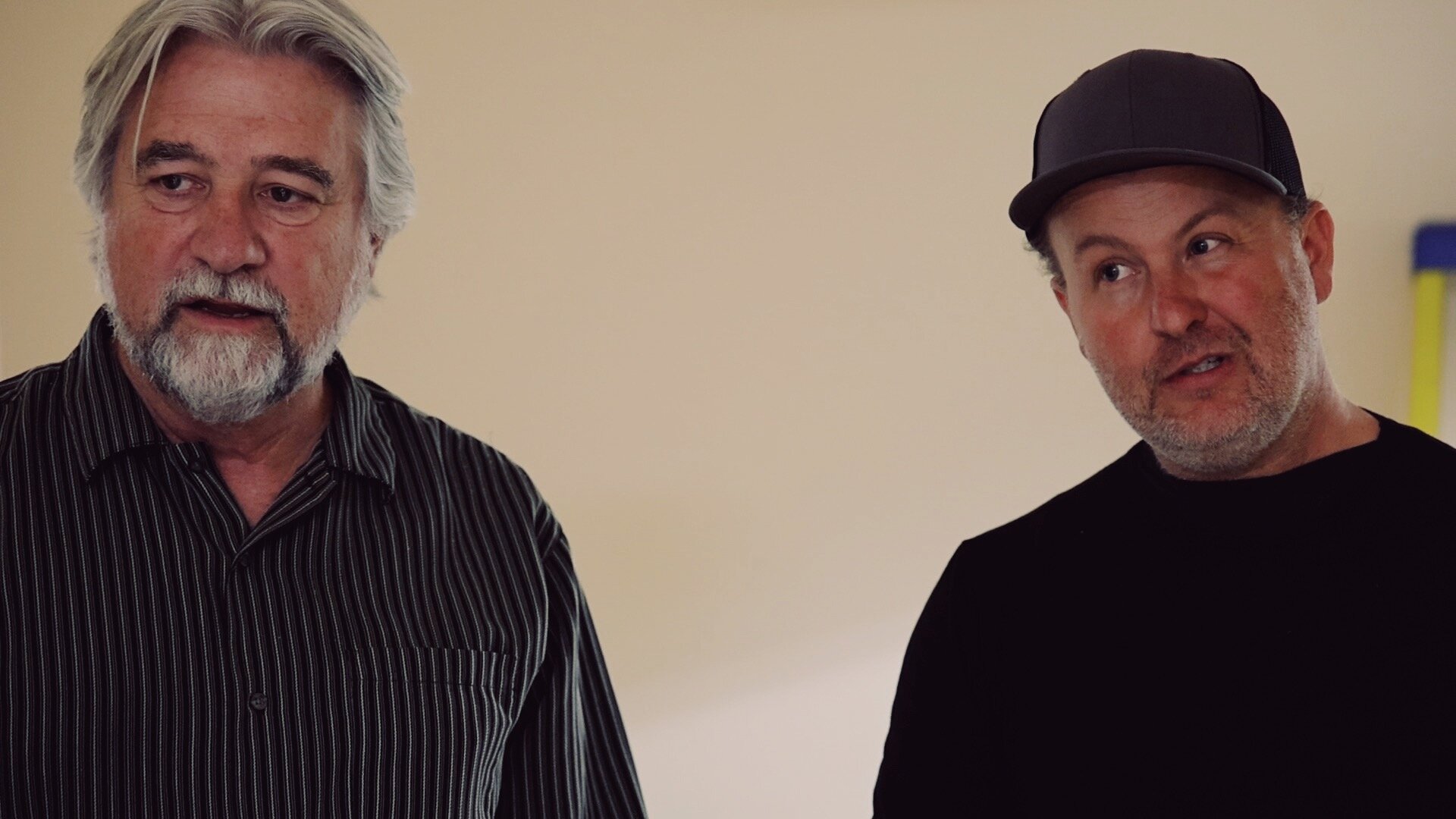
“Colcha Embroidery of the San Luis Valley” takes place in the Theatre Gallery at the Arvada Center Sept. 14 - Nov. 12, 2023 in collaboration with The Range, HEART of Saguache, History Colorado and the Sangre de Cristo Heritage Center.
Two additional exhibits centering San Luis Valley artists also open September 14: “Emilio Lovato: A Mi Manera, A 40-Year Survey” appears in the Main Gallery, while “Latitude 37 Degrees: Art of Southern Colorado” will be shown in the Upper Gallery.
An artist talk is scheduled for Sept. 14 at 5 p.m.
A full list of exhibiting artists is available below:
Mary Baker, Maria Eufemia Barela, Sandy Dolak, Adrienne Garbini, Patsy Garcia, Peggy Garcia Williams, Margie Gurule, Josephine Lobato, Rita Lobato Crespin, Virginia 'Bena' Lovato, Brenda Lovato, Loretta Rose Lujan, Donna Madrid Hernandez, Aurora Martinez, Junita Martinez, Lydia Martinez, Irene Medina, Julia Mondragon, Connie Mamich Morrell, Mary Olivas, Daisy Ortega, Evanea Rae Pacheco, Marcella Pacheco, Marcella Quintana, Nettie Quintana, Virginia Rodriquez, Sostena Sandoval Clevens, Trent Segura, Mary Taylor, Tiva Trujillo, Tina Valdez, Judy Vigil, Mary Vigil de Rodriguez, and Delores Worley.
Kate Perdoni is Engagement Journalism Director at Rocky Mountain PBS and can be reached at kateperdoni@rmpbs.org.
Related Story
